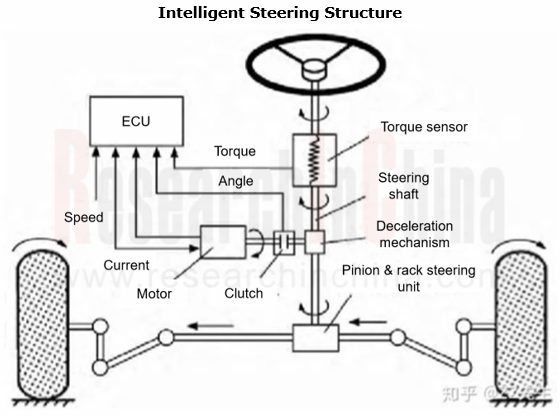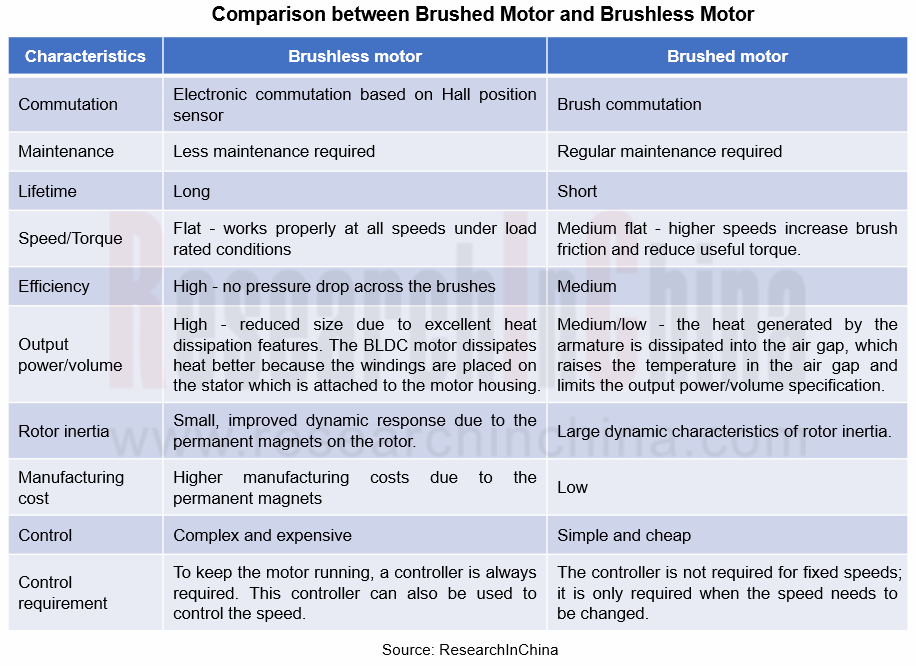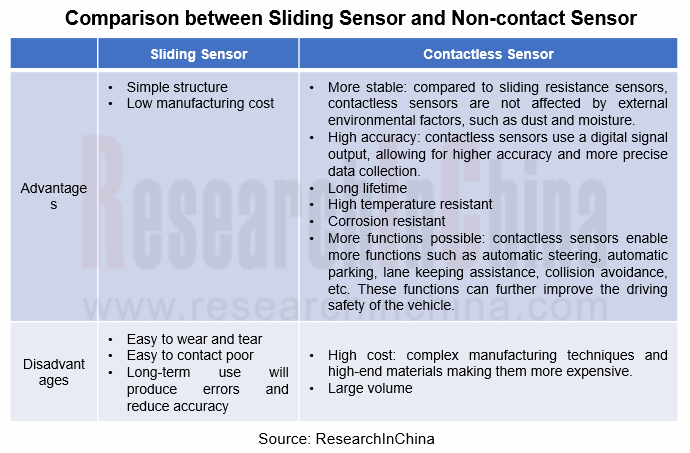Research on intelligent steering key components: four development trends of intelligent steering
The automotive chassis consists of four major systems: transmission system, steering system, driving system and braking system, covering five major parts: drive, gearshift, brake, suspension and steering. Wherein, the steering system passes through the development process from mechanical steering to hydraulic power steering to electric power steering. Nowadays, as intelligent driving technology advances, intelligent steering, namely, electric power steering as an important part of intelligent chassis, is becoming widespread, and steer-by-wire that develops from electric power steering is also being applied.
Based on conventional mechanical steering systems, electric power steering system adds sensor, electronic control unit (ECU) and power steering mechanism, and generates power by controlling the electric motor to achieve steering, which is completely free from the hydraulic power method. The key components of this system are torque sensor, motor and ECU, of which:
?The torque sensor is used to measure the magnitude and direction of the torque applied to the steering wheel by the driver, and to convert the torque into an electrical signal sent to the ECU.
?The electric motor converts the electric energy provided by the battery or generator into mechanical energy, outputs the appropriate torque to the mechanical steering mechanism, and together with the steering gear offers the steering torque to the steering wheels.
?Based on the signals from the speed and torque sensors, the ECU determines the direction of rotation of the motor and the magnitude of current of the booster, so that the motor can provide power steering effects according to vehicle speeds.

Trend 1: steer-by-wire will gradually replace electric power steering
The main difference between steer-by-wire (SBW) and electric power steering (EPS) is that SBW removes the mechanical connection between the steering wheel and vehicle wheels and uses sensors to obtain the steering wheel angle data, and then the ECU converts the data into specific driving force data, so that the electric motor can drive the steering gear to turn the wheels. The EPS, on the other hand, uses an electric motor to assist the driver in steering.
SBW outperforms EPS in response sensitivity and expansibility of intelligent driving functions. SBW not only has all the advantages of conventional mechanical steering systems, but also can optimize angular transmission characteristics, which is difficult for a mechanical system. By virtue of these benefits, SBW systems have become a development trend in the automotive industry.
Trend 2: the gradual shift from brushed motors to brushless motor
Brushless motors generate no electric sparks while running, its most direct difference from brushed motors, which minimizes the interference of electric sparks to remote control on radio equipment. Secondly, without brush, brushless motors enable much less friction, smooth operation, far lower noise and higher operational stability when they run. Thirdly, having no brushes means the wear of brushless motors is concentrated on the bearings. From a mechanical prospective, brushless motors are almost maintenance-free, only needing some dust removal maintenance when necessary. In the long run, brushless motors will thus gradually replace brushed motors.

Trend 3: the transition from sliding variable resistance sensor to non-contact sensor
Sliding variable resistance sensors are a relatively conventional type of sensor. Despite high maturity, this sensor technology also has problems of unstable performance and short service life caused by wear and ageing of the sliding contact surfaces. In contrast, non-contact sensors offer following benefits:
1.Longer service life for insusceptibility to wear and ageing;
2.Higher levels of accuracy and stability;
3.Available in harsh environments, e.g., high temperature and high pressure;
4.Small size, light weight, easy to install and maintain.
Hence non-contact sensors are expected to replace sliding variable resistance sensors and dominate the market in the future.

Trend 4: 32-bit MCUs are replacing 8-bit/16-bit MCUs.
8-bit, 16-bit and 32-bit products prevail in the automotive MCU market. 8-bit MCUs are mainly used for controlling basic functions such as seat, air conditioner, fan, window, and door control module. 16-bit MCUs are generally applied to lower body covering power and transmission systems like engine, e-brake and suspension system. 32-bit MCUs customized for vehicle intelligence are often seen in automotive power system, intelligent cockpit and body control.
In addition, steering system control units are almost monopolized by foreign manufactures such as JTEKT, NSK Ltd, ZF TRW, Nexteer and Sono Koyo Steering, and they are capturing bigger market shares by way of establishing joint ventures and partnerships. For example, the four companies, Aisin, ADVICS, JTEKT and Denso, have respectively combined their competitive hardware such as sensors, steering and brakes with integrated ECUs and established integrated ECU software development companies.
OEMs and Tier 1 Suppliers' Cost Reduction and Efficiency Enhancement Strategy Analysis Report, 2025
ResearchInChina released the "OEMs and Tier 1 Suppliers' Cost Reduction and Efficiency Enhancement Strategy Analysis Report, 2025", summarizing hundreds of cost reduction strategies to provide referen...
Automotive Fixed Panoramic Sunroof and Smart Roof Research Report, 2025
With the intelligent application of car roofs as the core, this report systematically sorts out a series of new products such as fixed panoramic sunroof/openable sunroof, ceiling screen, roof ambient ...
Automotive-Grade Power Semiconductor and Module (SiC, GaN) Industry Research Report, 2025
SiC/GaN Research: Sales volume of 800V+ architecture-based vehicles will increase more than 10 times, and hybrid carbon (SiC+IGBT) power modules are rapidly being deployed in vehicles.
Sales volume o...
Cockpit Agent Engineering Research Report, 2025
Cockpit Agent Engineering Research: Breakthrough from Digital AI to Physical AI
Cockpit Agent Engineering Research Report, 2025 starts with the status quo of cockpit agents, summarizes the technical ...
Prospective Study on L3 Intelligent Driving Technology of OEMs and Tier 1 Suppliers, 2025
L3 Research: The Window of Opportunity Has Arrived - Eight Trends in L3 Layout of OEMs and Tier 1 Suppliers
Through in-depth research on 15 OEMs (including 8 Chinese and 7 foreign OEMs) and 9 Tier 1 ...
China Commercial Vehicle IoV and Intelligent Cockpit Industry Research Report 2025
Commercial Vehicle IoV and Cockpit Research: The Third Wave of Passenger Car/Commercial Vehicle Technology Integration Arrives, and T-Box Integrates e-Call and 15.6-inch for Vehicles
I. The third wav...
Intelligent Vehicle Electronic and Electrical Architecture (EEA) and Technology Supply Chain Construction Strategy Research Report, 2025
E/E Architecture Research: 24 OEMs Deploy Innovative Products from Platform Architectures to Technical Selling Points
According to statistics from ResearchInChina, 802,000 passenger cars with domain...
Research Report on Intelligent Vehicle Cross-Domain Integration Strategies and Innovative Function Scenarios, 2025
Cross-Domain Integration Strategy Research: Automakers' Competition Extends to Cross-Domain Innovative Function Scenarios such as Cockpit-Driving, Powertrain, and Chassis
Cross-domain integration of ...
China Autonomous Driving Data Closed Loop Research Report, 2025
Data Closed-Loop Research: Synthetic Data Accounts for Over 50%, Full-process Automated Toolchain Gradually Implemented
Key Points:From 2023 to 2025, the proportion of synthetic data increased from 2...
Automotive Glass and Smart Glass Research Report, 2025
Automotive Glass Report: Dimmable Glass Offers Active Mode, Penetration Rate Expected to Reach 10% by 2030
ResearchInChina releases the Automotive Glass and Smart Glass Research Report, 2025. This r...
Passenger Car Brake-by-Wire (BBW) Research Report, 2025
Brake-by-Wire: EHB to Be Installed in 12 Million Vehicles in 2025
1. EHB Have Been Installed in over 10 Million Vehicles, A Figure to Hit 12 Million in 2025.
In 2024, the brake-by-wire, Electro-Hydr...
Autonomous Driving Domain Controller and Central Computing Unit (CCU) Industry Report, 2025
Research on Autonomous Driving Domain Controllers: Monthly Penetration Rate Exceeded 30% for the First Time, and 700T+ Ultrahigh-compute Domain Controller Products Are Rapidly Installed in Vehicles
L...
China Automotive Lighting and Ambient Lighting System Research Report, 2025
Automotive Lighting System Research: In 2025H1, Autonomous Driving System (ADS) Marker Lamps Saw an 11-Fold Year-on-Year Growth and the Installation Rate of Automotive LED Lighting Approached 90...
Ecological Domain and Automotive Hardware Expansion Research Report, 2025
ResearchInChina has released the Ecological Domain and Automotive Hardware Expansion Research Report, 2025, which delves into the application of various automotive extended hardware, supplier ecologic...
Automotive Seating Innovation Technology Trend Research Report, 2025
Automotive Seating Research: With Popularization of Comfort Functions, How to Properly "Stack Functions" for Seating?
This report studies the status quo of seating technologies and functions in aspe...
Research Report on Chinese Suppliers’ Overseas Layout of Intelligent Driving, 2025
Research on Overseas Layout of Intelligent Driving: There Are Multiple Challenges in Overseas Layout, and Light-Asset Cooperation with Foreign Suppliers Emerges as the Optimal Solution at Present
20...
High-Voltage Power Supply in New Energy Vehicle (BMS, BDU, Relay, Integrated Battery Box) Research Report, 2025
The high-voltage power supply system is a core component of new energy vehicles. The battery pack serves as the central energy source, with the capacity of power battery affecting the vehicle's range,...
Automotive Radio Frequency System-on-Chip (RF SoC) and Module Research Report, 2025
Automotive RF SoC Research: The Pace of Introducing "Nerve Endings" such as UWB, NTN Satellite Communication, NearLink, and WIFI into Intelligent Vehicles Quickens
RF SoC (Radio Frequency Syst...